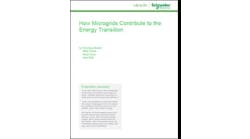Microgrids and community aggregation programs may prove to be natural partners, as Mike Gordon, CEO of Joule Assets, explained in a recent interview.
Gordon should know. In addition to his role at Joule Assets, which offers financing for energy efficiency and demand response, Gordon acts as co-chair of an organization in his own neighborhood that is creating a community choice aggregation. These local energy initiatives give a community control over its energy supply.
Gordon’s group won approval last week from the New York Public Service Commission for a community aggregation pilot program in the New York City suburb of Westchester County. Sustainable Westchester plans to form a community aggregation that will seeks bids for natural gas and electric supply. Municipalities within the county have the option of joining the aggregation.
The Role of the Merchant Power Plant
What’s the link between community aggregations and microgrids? Gordon says it’s based on economics.
“We expect community choice aggregations will make microgrids a heck of a lot more cost effective,” Gordon said.
By way of example, he says, envision a 40-acre site with 10 large businesses, next to a water facility, a school and a 1,000 homes.
In this hypothetical, the community forms an aggregation and issues a bid seeking supply. It crafts the bid to draw out the kind of economic efficiency that local energy offers. For example, if a merchant power plant locates near its customers, it might be able to offer supply priced below grid power. This is because its nearness to the customer spares the merchant power producer costs that are associated with transmission line loss — an inefficiency that occurs when electricity travels long distances over wires.
If the aggregation is large enough “it is a total win-win for all involved,” Gordon said.
The merchant power plant signs a bilateral contract that supplies power below the grid clearing prices to account for the lack of line loss. So the community wins with cheaper energy. The power plant operator wins because it is left with more eligible capacity to sell. The plant gets a better return in the microgrid-setting than in the wholesale market, Gordon said.
With the power situated onsite, the aggregation can then take its plan one step further and form a microgrid with islanding capability.
Bringing the merchant power plant developer to the table in this way helps overcome a problem associated with some community microgrids — difficulty securing financing for the generation portion of the operation.
What’s Next for Westchester
Sustainable Westchester encompasses 800,000 county residents and 38 municipalities. Municipalities in the county are passing resolutions to determine their participation in the community aggregation. Gordon’s back-of-the-envelope estimate is that if 20 percent of the population participates, the aggregation will issue a solicitation for resources valued at about $500 million; or $1 billion if 40 percent choose to participate. The aggregation will include both residential and small business customers.
Sustainable Westchester also is encouraging the communities to apply for microgrid funding offered by the state through the New York Prize program. Gordon says private funding also may be possible.
Early microgrids have needed funding from the public sector because of typical investor fear of the new, Gordon said. But he sees investors getting more comfortable with microgrids now.
The Westchester County pilot project represents the first community aggregation in New York. The plan is part of the state’s larger Reforming the Energy Vision (REV) policy effort, designed to create a market platform for distributed energy resources.
Sustainable Westchester, a not-for-profit organization, has been working on the aggregation concept for more than two years. In December the group petitioned the commission for approval of the pilot program for the communities, which are located within the utility service territories of Consolidated Edison and New York State Electric & Gas.
In its ruling approving the pilot program, the public service commission said potential benefits from the aggregation include:
- Price stability for a fixed contract term
- The potential for lower prices and more favorable terms
- The ability to design a program that reflects local preferences and needs, including a preference for cleaner power sources
- The ability of suppliers to secure a large number of customers at relatively low marketing costs
Sustainable Westchester expects to issue a request for proposals within about 90 days. More details about the program are here.
Read more articles about microgrids worldwide by subscribing to the Microgrid Knowledge Newsletter. It’s free.






